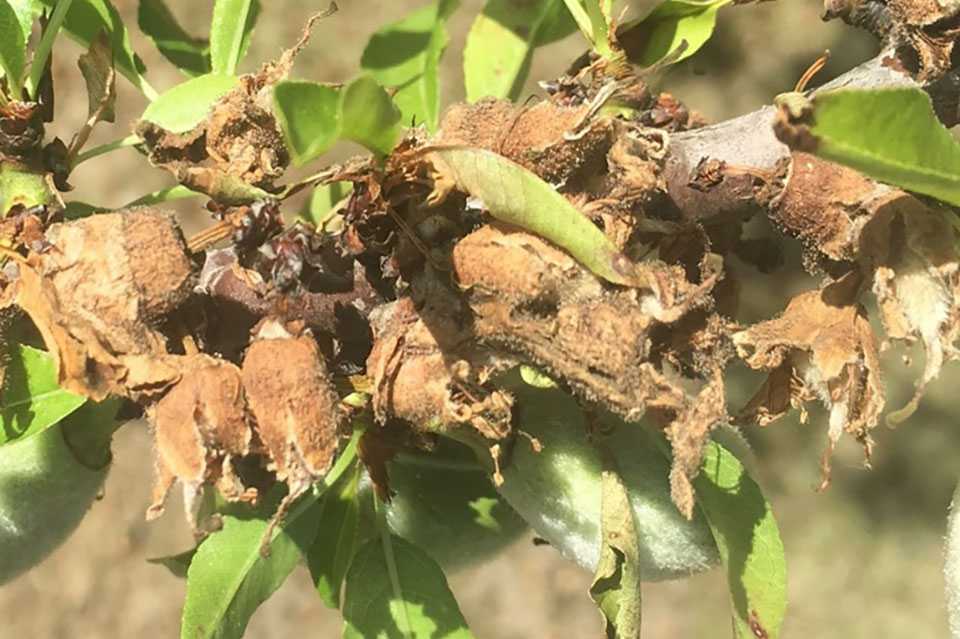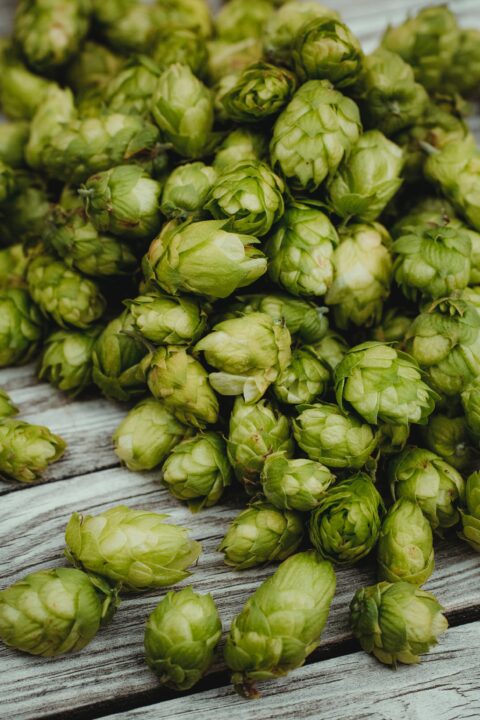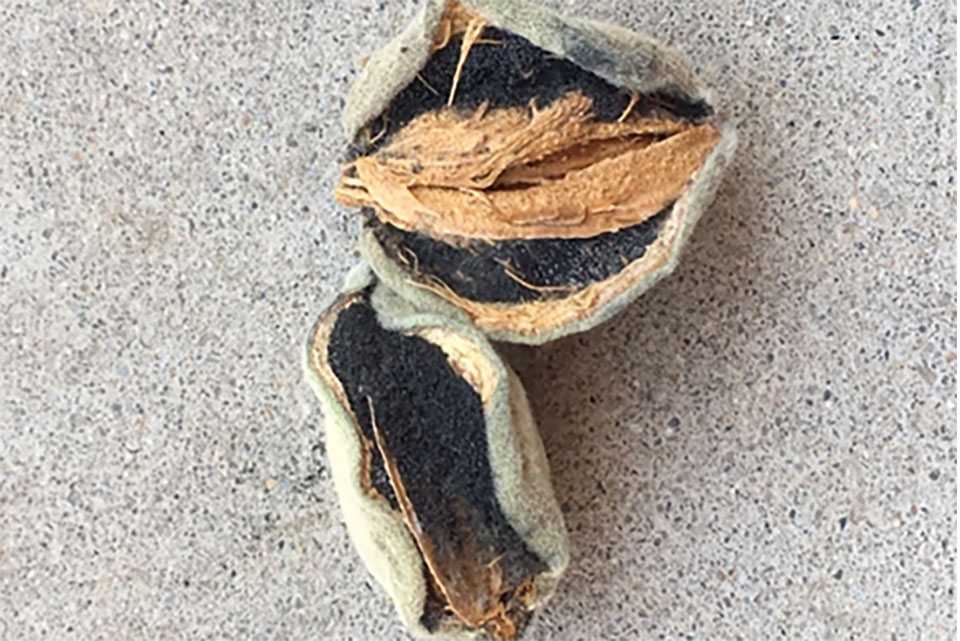Potential Impacts of Orchard Dust on Almonds

Mowing events in your almond orchard should be strategically timed to prevent large amounts of dust.
Photo by Wesley K. Asai
Most almond growers are aware of the correlation between excessive dust in orchards and the resulting problems with spider mite flare-ups. There is more to this concern than the inconsiderate neighbor who drives too fast on the canal bank road or the pickup machines at harvest. The timing of these dust events and the source of the dust can play major roles on how the trees may respond.
During bloom or at hull split, dusty conditions in almond orchards are not given that much thought. At bloom, the ground is usually damp, and prior to hull split, orchards are being irrigated, so conditions are not as favorable to create dust. There are times, however, due to a lack of rainfall or irrigation cutoffs, that the orchard floor can be quite dry.
One of the biggest culprits at these timings are mowers. If the upper soil surface is dry, large amounts of dust are created even if the blades are set at the correct height to reduce direct contact with the ground. This is especially true in fine powdery soils.
Why is this a concern at these times? Pathogenic spores can be dispersed in this dust. Research has shown that fungi such as Alternaria, Cladosporium, Fusarium, and Cytospora, have been dispersed by aerosol transport in multiple crops. During bloom many diseases, such as brown rot (Monilinia) and jacket rot (Botrytis), invade blossoms, and inoculum can be transported by rain, wind, and dust. There is also evidence that mowing grassy species in the spring can potentially create aerosols of bacteria that may be responsible for bacterial blast (Pseudomonas).
Mowing is avoided during the bloom period of citrus, plums, nectarines, and pome fruits for concerns about disease as well as driving thrips into the canopy that will scar fruit. Spring mowing is best done just before bloom, so that the maximum amount of time will pass before the most susceptible floral parts will be exposed to the subsequent mow.
During hull split, several fungi, including Rhizopus, Monilinia, and Aspergillus, can potentially invade the open sutures of freshly hull-split nuts and cause hull rot. Avoiding additional dust during this period can reduce the probability of infections. As during bloom, mowing before hull split should be timed to coincide with the least amount of dust exposure to the freshly splitting nuts. Keep in mind that the other management strategies of irrigation deficit, nitrogen management, and prompt harvest shaking are still vital to minimizing hull rot.
This column is not a condemnation of mowing, since it is an important method to control weeds, destroy mummy nuts, and reduce frost risk, just to name a few. However, with good planning these mowing events can be strategically timed to minimize any negative effects on the tree or crop by working around vulnerable times, such as bloom or the beginning
of hull split.












